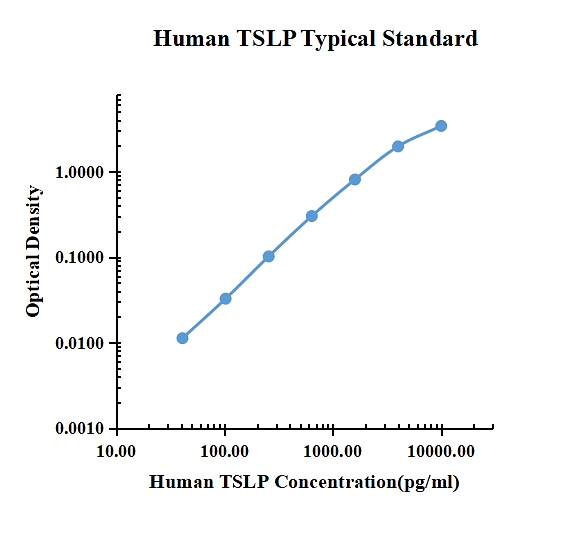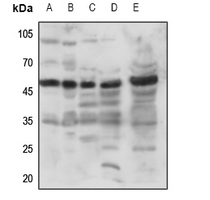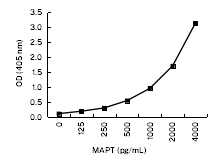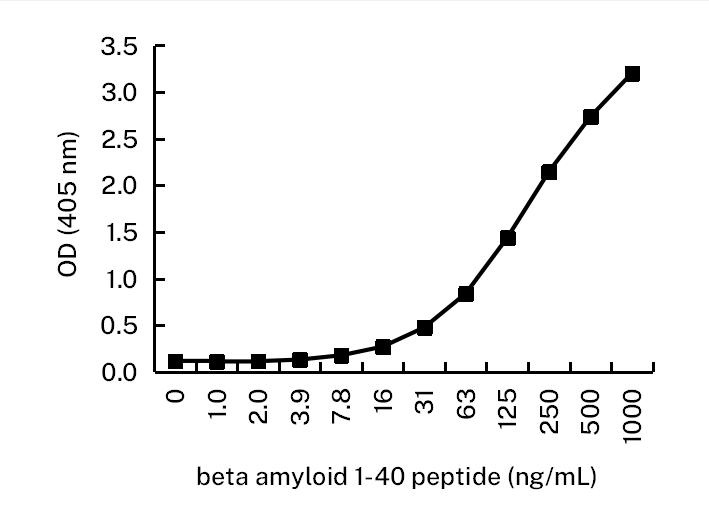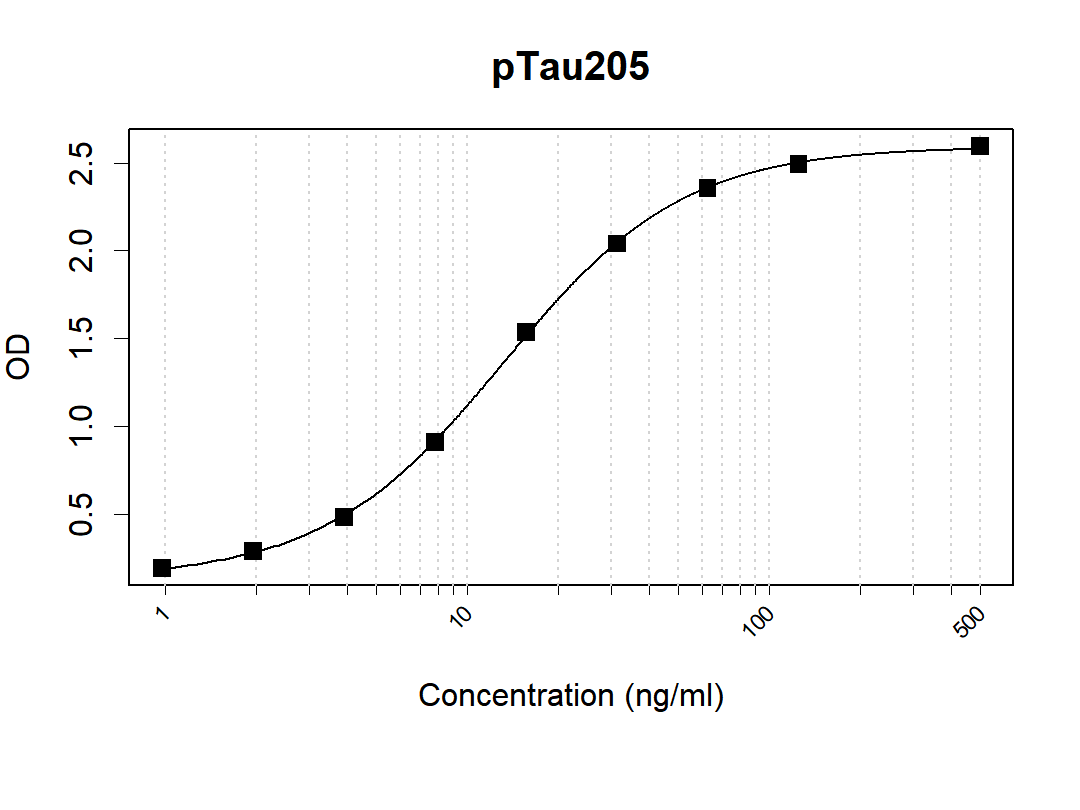Human TSLP ELISA Kit
CAT.NO. : AEH0061
RMB Please choose
RMB Please choose
Size:
Trail, Bulk size or Custom requests Please contact us
*产品价格可能会有所调整,请以品牌方官网实时更新的价格为准,以确保准确性。
Background
Thymic Stromal Lymphopoietin (TSLP) was originally identified as an activity from the conditioned medium of a mouse thymic stromal cell line that promoted the development of B cells. The activities of mouse TSLP overlap with, but are distinct from, those of mouse IL-7. Both mouse TSLP and IL-7 can co-stimulate growth of thymocytes and mature T cells, and support B lymphopoiesis in long-term cultures of fetal liver cells and bone-marrow cells. Whereas mouse IL-7 facilitates the development of B220+/IgM- pre-B cells, mouse TSLP promotes the development B220+/IgM+ B cells. Human TSLP was reported to preferentially stimulate myeloid cells, inducing the release of T cell-attracting chemokines from monocytes and enhancing the maturation of CD11c+ dendritic cells. Human TSLP cDNA encodes a 159 amino acid (aa) residue precursor protein with a 28 aa signal sequence. Within the mature region, six of the seven cysteine residues present in the mouse TSLP involved in intramolecular disulfide bond formation are conserved in the human TSLP. Human TSLP shares approximately 43% aa sequence identity with mouse TSLP. By Northern blot analysis, human TSLP expression has been detected in many tissues with the highest expressions in heart, liver, testis and prostate. TSLP signals through a heterodimeric receptor complex that consists of IL-7 R alpha and the TSLP R, a member of the hemopoietin receptor family most closely related to Rgammac.
- TSLP R, also named Delta and CRLM-2 (Cytokine Receptor-like Module-2), was originally cloned as a novel type 1 cytokine receptor with similarity to the common gamma chain (gamma c). It was subsequently identified as a subunit of the cellular receptor for the IL-7-like cytokine TSLP and termed TSLP R. TSLP R shows 24% sequence identity with the mouse gc receptor. TSLP R expression is constitutive in immune and hematopoietic cells, but is up-regulated in Th2 cells.
Typical data
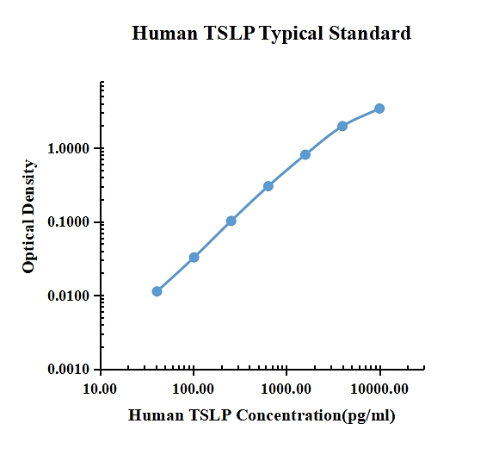
| pg/ml | O.D. | Average | Corrected | |
| 0.00 | 0.0127 | 0.0126 | 0.0126 | |
| 13.72 | 0.0242 | 0.0236 | 0.0239 | 0.0113 |
| 41.15 | 0.0456 | 0.0449 | 0.0453 | 0.0326 |
| 123.46 | 0.1141 | 0.1149 | 0.1145 | 0.1019 |
| 370.37 | 0.3035 | 0.3257 | 0.3146 | 0.3020 |
| 1111.11 | 0.8219 | 0.8180 | 0.8200 | 0.8073 |
| 3333.33 | 1.9760 | 1.9850 | 1.9805 | 1.9679 |
| 10000.00 | 3.4240 | 3.4340 | 3.4290 | 3.4164 |
Precision
| Intra-assay Precision | Inter-assay Precision | |||||
| Sample Number | S1 | S2 | S3 | S1 | S2 | S3 |
| 22 | 22 | 22 | 6 | 6 | 6 | |
| Average(pg/ml) | 246.9 | 1125.8 | 2946.4 | 226.7 | 1051.2 | 2968.1 |
| Standard Deviation | 14.2 | 57.2 | 154.4 | 7.3 | 30.5 | 87.9 |
| Coefficient of Variation(%) | 5.7 | 5.1 | 5.2 | 3.4 | 2.9 | 3.0 |
Intra-assay Precision (Precision within an assay) Three samples of known concentration were tested twenty times on one plate to assess intra-assay precision.
Inter-assay Precision (Precision between assays) Three samples of known concentration were tested six times on one plate to assess intra-assay precision.
Spike Recovery
The spike recovery was evaluated by spiking 3 levels of human TSLP into health human serum sample. The un-spiked serum was used as blank in this experiment.
The recovery ranged from 83% to 120% with an overall mean recovery of 100%.
The recovery ranged from 83% to 120% with an overall mean recovery of 100%.
Sample Values
| Sample Matrix | Sample Evaluated | Range (pg/ml) | Detectable (%) | Mean of Detectable (pg/ml) |
| Serum | 30 | 7.28-7734.97 | 100 | 580.09 |
Serum/Plasma – Thirty samples from apparently healthy volunteers were evaluated for the presence of TGF-α in this assay. No medical histories were available for the donors.
 New Products
New Products




